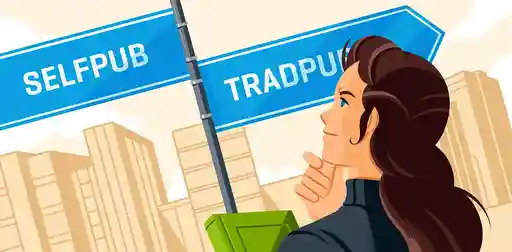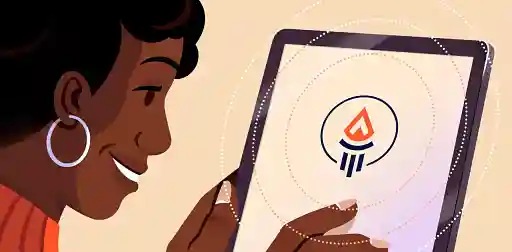Blog • Understanding Publishing
Last updated on Oct 15, 2025
Reedsy's Guide to Sustainable Publishing
Martin Cavannagh
Head of Content at Reedsy, Martin has spent over eight years helping writers turn their ambitions into reality. As a voice in the indie publishing space, he has written for a number of outlets and spoken at conferences, including the 2024 Writers Summit at the London Book Fair.
View profile →In this digital age, books are one of the only forms of media that remains largely physical. While we’re streaming our music and movies instead of buying CDs and DVDs, the rise of ebooks has yet to curtail the number of books being printed. And while this is great news for those of us who enjoy holding a book in our hands, our continued love affair with print books does have an environmental impact.
Several big and small factors contribute to the ecological footprint of the book publishing industry, and it can feel overwhelming to look at on a large scale. So we’re here to break down the topic and explain where the problems lie and how individual authors’ choices can help get their book out into the world without costing the planet.
The print industry: too much of a good thing?

When we think of sustainability in book publishing, our minds often go straight to one thing: paper. And it is a lot of paper — 32 million trees’ worth a year in the US alone, to be precise. However, as with any huge industry, publishing’s environmental impact is complex and goes beyond the blank page.
While the production of paper for book printing has significant environmental implications, several other factors within the supply chain can increase the environmental toll of getting a book into the consumer's hands. Some of these factors include:
- The energy and water used to produce the book itself.
- Inefficiencies in the supply chain, such as overproduction of certain titles leading to waste.
- The release of greenhouse gas emissions while transporting raw materials and finished products between manufacturers, distributors, and consumers.
- The use of packing materials when shipping books.
- The environmental impact of producing and using digital reading devices, such as e-readers.
These are, of course, big industry-wide concerns, but that doesn’t mean that individual authors are powerless. If you’re an author looking to produce books responsibly, here are some key areas you should be aware of to make environmentally conscious choices along the way.
What can traditionally published authors do to help?
Getting any kind of traditional publishing deal is no mean feat, so it’s important to acknowledge that not all authors (and especially not debut ones) will have the luxury to make any demands on how a publishing house manages its sustainability efforts. But as your writing career develops, these are some important conversations you may wish to have with your publisher.
Choose your publisher with sustainability in mind
As well as finding a publisher that’s right for your project in terms of their area of expertise, environmentally-minded authors should also factor sustainability into who they choose to work with. A company’s commitment to good environmental practices can definitely be borne in mind when you’re deciding who to work with, and how to work with them.
Practises will vary from publisher to publisher, so you should always do your research before submitting anywhere. Many indie presses are doing great work with sustainability as a key focus for their work. Even those who don’t explicitly focus on the issue are more likely to run smaller initial print runs than larger imprints. These smaller runs are often more based on cost than the environment as a smaller volume of first editions is more affordable upfront. Still, an indirect benefit of this is reducing waste — something larger publishers should also be pursuing.
Ask about limited initial print runs and print-on-demand
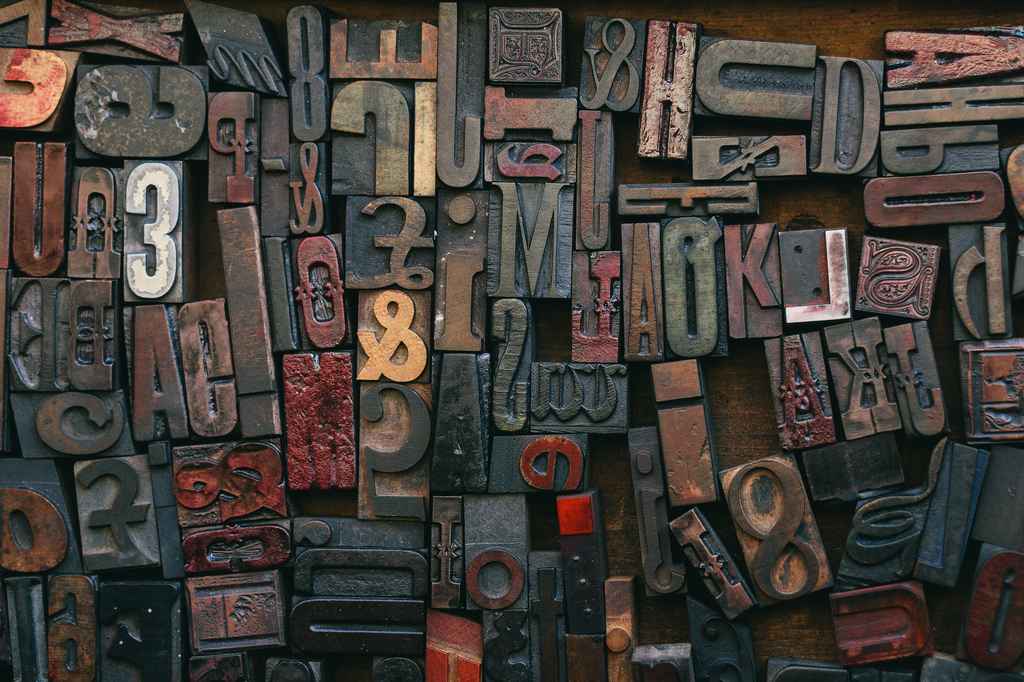 One massive concern within the traditional publishing industry is the overproduction of certain titles, leading to waste. Large publishers have the budget to create high-volume initial print runs of their titles if they want to. Whilst this can be good for consumers as it makes it easier for readers to get their hands on a copy straight away after a release, this tactic is also a calculated risk that doesn’t always pay off.
One massive concern within the traditional publishing industry is the overproduction of certain titles, leading to waste. Large publishers have the budget to create high-volume initial print runs of their titles if they want to. Whilst this can be good for consumers as it makes it easier for readers to get their hands on a copy straight away after a release, this tactic is also a calculated risk that doesn’t always pay off.
Sometimes, retailers will be left with a surplus of copies for certain books that haven’t sold as expected. To save shipping costs, rather than returning unsold copies of books to the publisher, retailers will often simply tear off the covers of their unsold copies and send those back to prove those books didn’t sell. The remainders of the books may end up being sent to be recycled (which consumes even more energy on top of the energy expended to produce the book in the first place) or, even worse, simply dumped in landfills.
To combat this issue, the Green Press Initiative — a group that works towards conserving resources and reducing emissions in the print industry — identified lower initial print runs and supplementing any shortfall with print on demand services as a key change to the publishing supply chain going forward in 2009. Unfortunately, the adoption of this method has been far from universal, and many large publishers have been sluggish to take it up, as smaller print runs can lead to higher per-unit costs and longer waits for consumers.
Although the larger publishers lag behind in this regard, many smaller indie presses are already using these methods for environmental and financial reasons. If your heart is set on working with a larger publisher or you already have a relationship with one, however, speak with that publisher to see whether a limited initial run or print-on-demand model has been considered to prevent a surplus. If you’re an established author, don’t be afraid to leverage your influence to put some pressure on your publisher.
Know what questions to ask
The slow uptake of small runs doesn’t mean that publishers aren’t taking steps in the right direction — there are other areas you can examine to gauge whether a publisher is an eco-conscious choice.
One quick way to determine if sustainability is on a publisher’s mind is to look at their website and see if they discuss any environmental policies. Many of the Big 5 publishing houses and their imprints are undertaking environmental commitments, such as Penguin Random House’s commitment to reach climate neutrality by 2030 and their use of 100% sustainably sourced paper, and you can find these listed on their website. A publisher advertising a focus on sustainability is a good sign that they are aware of the issues at hand.
If their policy isn’t laid out clearly, here are some helpful questions to ask to help gauge whether an imprint is an environmentally responsible choice:
- Where do they source their paper from? Is it recycled or sustainably sourced?
- Do they have an explicit environmental policy? Does this policy include concrete, actionable steps, and quantifiable commitments?
- Do they use print-on-demand technology or limited print runs?
- Are they a member of any environmental initiatives, such as the Green Press Initiative’s Environmentally Responsible Publisher Certification?
- Do they work with retailers who are also committed to making the supply chain energy efficient?
These kinds of questions aren’t just useful for finding a publisher: if you already have a certain publisher in mind to work with and aren’t shopping around for one anymore, they can also be used to open a conversation surrounding sustainability with that chosen publisher. While such measures may not be a matter of policy for the company yet, authors can certainly enquire if there are any places within the supply chain where more environmentally friendly choices can be made. It never hurts to ask!
Now that we’ve discussed considerations for traditionally published authors, let’s look into some of the choices self-pub authors have available to them to optimize for sustainability. Traditionally published authors, don’t look away! Like making your work available digitally and supporting libraries, some of these tips are relevant to you, too.
What can self-published authors do to help?
Self-publishing will afford you much more control over how you produce and distribute your book, making it a desirable prospect for eco-conscious authors. For example, while a traditional publishing deal may have a certain number of print copies baked in as standard, an indie author could go fully paperless if they choose, or source their own materials if they go with print. Here are a few ways you can take advantage of that increased flexibility.
Go digital first
One solution to publishing’s paper problem is simple: ebooks. Making your book available on digital platforms such as Amazon’s KDP immediately cuts out the issue of paper creation and paper waste. Readers can have thousands of books at their fingertips without having to worry about how to dispose of those books afterward. Plus, without the need to ship books from the press to the warehouse, and from the warehouse to the stores (and, in the case where copies are returned, back from the stores to a pulping facility), you can drastically reduce your book's footprint.
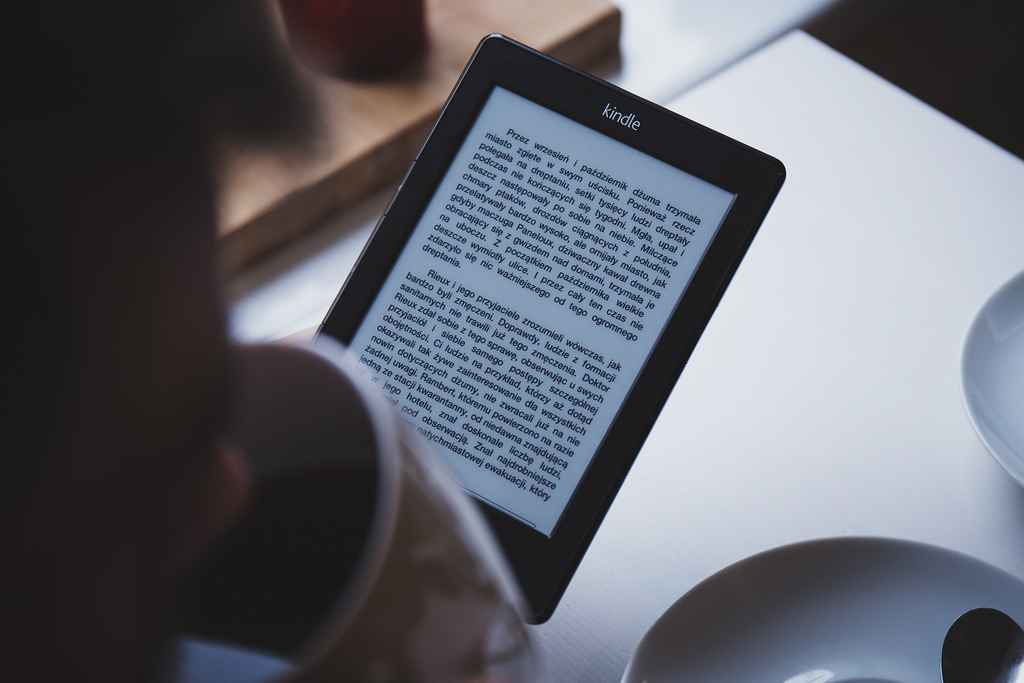
Beyond the environmental benefits, going digital-first with your publishing plan has another major draw for self-published authors — it’s cheap! Environmentally conscious options for print books are unfortunately still more expensive than conventional methods and materials, meaning you may need to offset the higher production cost with a higher price for consumers or a lower profit margin. Meanwhile, publishing an ebook is very cheap, making it a wallet-friendly option on top of being a planet-friendly one.
Of course, there is no such thing as a perfect option. Devices used to read digital books are not environmentally neutral. According to CustomMade, producing an e-reader involves releasing 65 pounds of CO2 and the consumption of 100-kilowatt hours of fuel, using difficult-to-obtain and hard to recycle materials. With that said, a Cal Poly study suggests that someone reading upwards of 40 to 50 books on an e-reader (vs. the print version) would offset the carbon footprint of producing that device. Furthermore, many people read ebooks on devices they already own, such as smartphones or tablets, rather than buying a dedicated e-reader.
Another low-impact (and lucrative) reading option for authors to explore is audiobooks. These are not only eco-friendly but happen to be the fastest-growing segment of the publishing industry.
The combination of ebooks and audiobooks can significantly minimize the paper footprint of serious readers while maximizing the utility of digital devices they already own, so having both available is a great move for encouraging sustainable reading habits.
Free course: How to create an audiobook
Reach new readers with the help of today's fastest-growing book format.
Use print on demand
If you want to make your book available in physical form, you can do a couple of things to mitigate the impact. As discussed earlier, big print runs are a major problem from an environmental standpoint. While indie authors are unlikely to print as many initial copies of a book as a traditional publisher would, minimizing the risk for major surplus, bear in mind that every little bit helps in terms of waste reduction.
Self-publishing authors will have complete control over how many copies they print and how and often choose to exclusively use print on demand, unlike trad pub authors. As tempting as it may be to print off a lot of copies of your book, avoid stockpiling copies ahead of your launch. Being conservative with your initial run may bring up the cost per unit, but the planet will thank you, and it’ll also prevent you from spending money on copies that might not end up selling.
If you're really committed to minimizing waste and are okay with having only a tiny number of copies of your book available, you could even consider cutting out the middle man and making your own! This probably won't be sustainable if you want to sell more than a few copies, but crafty authors may enjoy putting together a very limited edition run of handmade books or chapbooks for their readers, alongside their digital offerings.
Learn about materials (and how to get the most out of them)
If you’re still set on having print copies of your book, do consider the type of paper that you’re using, as well as how you can maximize utility while minimizing the amount of raw material used.
As a starting point, Green America gives some basic tips for identifying environmentally responsible paper options:
- Check for the amount of recycled content. Most countries don’t have strict rules for what’s required to advertise something as recycled, so percentages vary, and the higher, the better. “Recyclable” doesn’t mean it has been recycled before, so watch out!
- See whether that recycled material is “post-consumer content” (material that becomes waste after it has been used by a consumer, such as a newspaper which gets recycled) or “pre-consumer content” (waste that is produced as a byproduct during a manufacturing process). The former is generally considered ecologically better as it prevents consumer waste from ending up in landfills, but both are better than no recycled content.
- Check for some kind of certification of responsibility. The FSC Seal (Forest Stewardship Council) certifies that the paper has been made from sustainably harvested wood fibers. If any of the paper’s content isn’t recycled, you’ll want to make sure it is still sustainably sourced.
- Ensure that the bleaching process is chlorine-free: chlorine is extremely toxic for the environment, so avoid paper that has been processed with it wherever possible.
You can also look at paper thickness as a deciding factor: while thick paper feels great, it actually increases the amount of pulp used, so thinner paper is the less wasteful option wherever it’s possible to use it. The use of thinner paper will also decrease the size and weight of your book, making transportation and packaging more sustainable, too.
Maximize the use you get out of your paper
As well as picking sustainable paper, make sure that you’re thinking about how to get the most out of the paper you use. This might involve changing the formatting of your book to maximize the number of words on a page (without sacrificing legibility, of course) or reducing the use of title pages or blank pages (also sometimes known as “endsheets”), which aren’t essential to your book’s readability. If you consult with a professional book designer, make sure you bring up any concerns you have so that they can factor them in when typesetting. If you can save a page here or there, it’ll make a big difference over time!
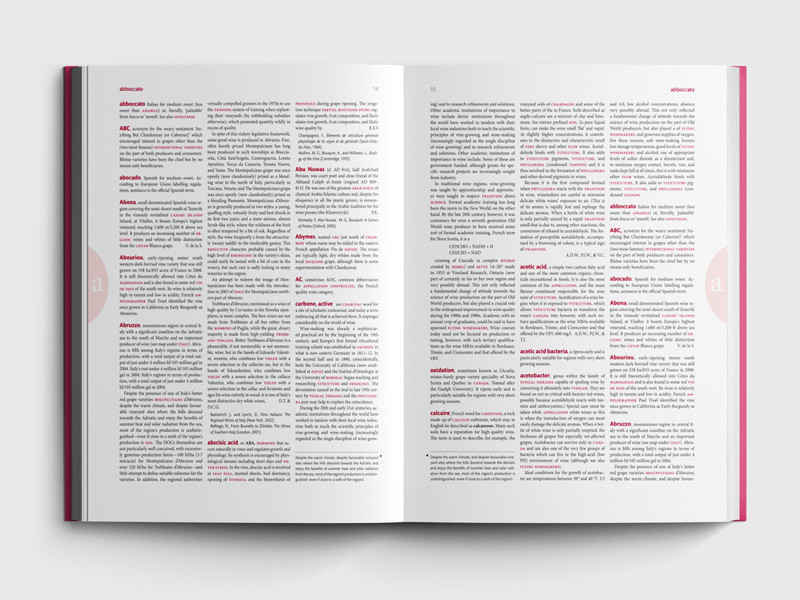
Choose eco-inks
One other material you may want to consider is the ink used in printing your book, especially if you’re producing a picture book or another type of book which requires heavy color or images. There is less information out there on sustainable inks compared to sourcing paper responsibly, but one area of growing interest is the use of soy ink. Companies like Ethicool have stated they prefer soy inks as they’re biodegradable, recyclable, energy-efficient to produce, and far less toxic than conventional petroleum-based inks. Speak to the printers you’re working with to see if they have any responsible options available.
Don’t forget other parts of the supply chain
In addition to materials for the books themselves, it’s worth considering the packaging for delivery to consumers or retailers as well. Wherever possible, try to go for low waste, recycled, and recyclable options.
While traditionally published authors may have less control over this side of distribution, responsible packaging is an important point to consider when researching potential retail outlets for your books.
Support libraries

One choice that authors can make in distributing their books which is both environmentally and socially responsible is promoting the use of libraries. This doesn’t just involve making sure your book is in libraries (although that’s a great start!), but could also mean doing book launch and promo events like readings in libraries or promoting library use to your followers on social media.
Not only will this encourage your followers to take advantage of libraries, and therefore minimize the amount of single-use or even completely unread books they might be buying — it’s also good business! Library appearances are invaluable for drumming up word of mouth and introducing yourself to new readers, as well as increasing your credibility as an author.
Furthermore, if you do get copies of your book into libraries, library networks often communicate with one another to buy more copies of books that do well. So, getting your books into libraries should actually be a high priority, especially for self-published authors!
Plus, environmentally speaking, selling to libraries is an extremely waste-efficient way of getting a single copy of your book into the hands of dozens of readers, spreading out the environmental impact of reducing that book amongst several people.
Free course: How to Get Your Book into Libraries
Tap into a world of new readers by getting your book into national libraries. Get started now.
We hope this post has given you some starting points for your eco-friendly publishing journey and opened your eyes to some of the many options available for both self-publishing and traditionally publishing authors! If you’re hungry for more environmentally conscious info, be sure to check out our reading list of books about sustainability.


